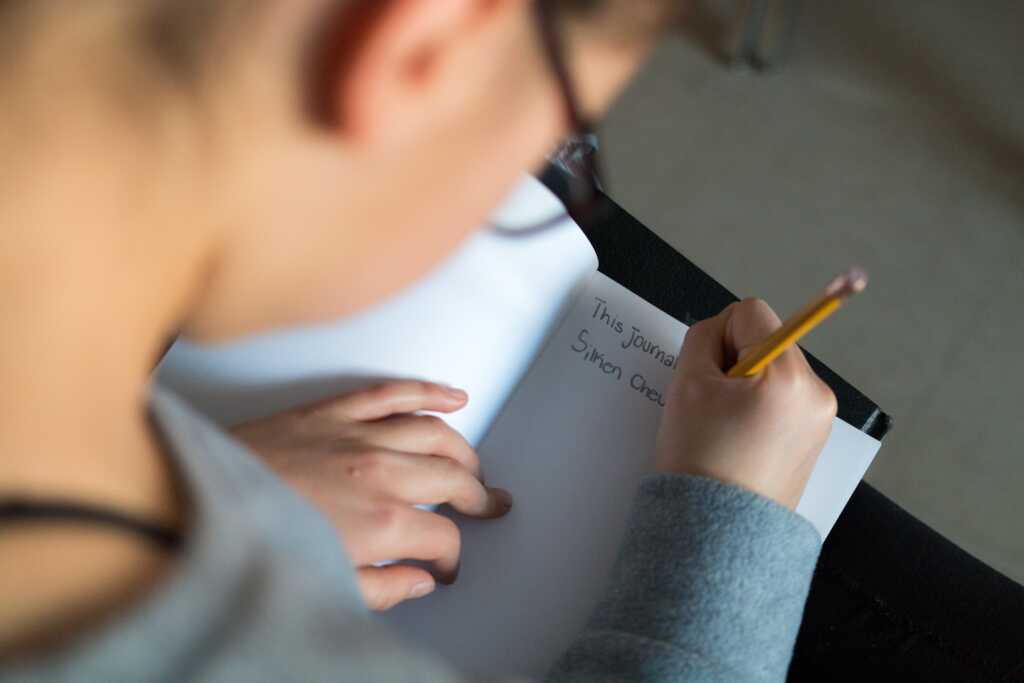Managing stress is a helpful skill which can be learned, and mindfulness exercises are one way to help you cope and manage. Many things can contribute to stress such as changes to routines and fear of the unknown. In times of a pandemic, it is normal to feel your stress levels heighten, especially if you are concerned for your, and your loved one’s health1.
If you are someone that is feeling stress, you are not alone and we hope we can provide some guidance. It can be difficult to carve out a few minutes to practice mindfulness, especially in times of stress. Because of this, we have gathered 3 different mindfulness exercises that can be done in 3 minutes to help your stress, so read on to learn about:
- What is Mindfulness?
- Mindfulness Exercise #1: 4-7-8 Breath
- Mindfulness Exercise #2: 5 Senses Exercises
- Mindfulness Exercise #3: Pen to Paper
- Bottom Line
What is Mindfulness?
Mindfulness is the ability to be fully present in the moment2. It means removing distractions and giving yourself permission to focus on one thing, usually yourself and what you are currently doing.

A very popular practice of mindfulness is meditation. However, meditation and mindfulness are not synonymous. Meditation is a practice to help improve mindfulness but this doesn’t mean you have to meditate to practice mindfulness. Mindfulness can be practiced in many ways that are quick, effective and free!
Practicing certain mindfulness exercises consistently has been shown to help decrease blood pressure3, improve focus 4,5,6 and improve our body’s response to stress6,7,8.
Mindfulness Exercise #1: 4-7-8 Breath
This breathing technique developed by Dr. Andrew Weil9 and based on ancient yogic breathing is used to bring the body in a deep state of relaxation. It’s great before going to bed!
Here is how to practice it:
Find a comfortable place to sit or lie down, removing (as much as possible) distractions.
- To begin, exhale completely through your mouth, letting out a sigh.
- Next, inhale silently through your nose as you count to four in your head.
- At the top of your inhale, hold your breath for seven seconds.
- Finally, exhale slowly from your mouth for eight seconds.
Tip: It can be helpful to exhale with pursed lips to slow down your exhale.
Repeat this cycle 4 times. As you become more comfortable with the practice, you can increase the amount of cycles you complete for up to 8 cycles.

Mindfulness Exercise #2: 5 Senses
This is great exercise to practice any time and anywhere. It can be done while seated at home, at your office or even while taking a walk. The 5 senses exercise is great to become aware of your surroundings and slowing down your pace while using your senses one at a time10,11.
Here is how to practice it:
Begin by taking 2 or 3 deep breaths. Then ask yourself the following questions
- What is something I can see? (For example: your desk, a coffee table…)
- What is something I can hear? (For example: birds chirping, cars driving by…)
- What is something I can smell? (For example: fresh air, hand soap…)
- What is something I can taste? (For example: coffee, a mint…)
- What is something I can feel? (For example: the chair under me, the clothes on my person…)
Tip: You don’t have to have an answer for everything but I encourage you to still ask yourself the question and simply answer, nothing.
If time permits you can slow down the exercise event more by naming 2 or 3 things in each category.
Mindfulness Exercise #3: Pen to Paper
Putting things in writing is a great way to help clear and visualize your thoughts12,13. There are many different prompts and journals available to assist you in putting pen to paper but sometimes simplicity is key. Find a good pen, a piece of paper and a timer and get ready to write.
Here is how to practice it:
Begin by taking 2-3 deep breaths and set your timer for 3 minutes.
- Put your pen to paper and start your timer
- Write down anything that comes to mind for the next 3 minutes. There are no rules to this exercise! Simply start writing and keep writing for 3 minutes
This could be a to-do list, gratitude list, current thoughts or emotions, a short story, poetry…
Tip: If you feel you have nothing to write, simply write that down! Keep writing it down until the timer rings.
You can adjust the duration of your timer and the more you practice, the easier it will feel.

Bottom Line – Do Mindfulness Exercises Reduce Stress?
Yes, mindfulness exercises are a helpful way to manage stress. Meditation is one type of mindfulness practice but there are other ones too. The 4-7-8 breath, 5-senses and pen to paper are three mindfulness exercises you can try. They can be quick and only take a minute – so don’t feel intimidated to try them!
Author:
Valerie Simoncic, BSc. Pharm Candidate
Faculty of Pharmacy
University of Waterloo
Edited and Reviewed by:
Aliya Kassamali, BSc. Pharm, PharmD
References:
1. CAMH. Mental Health and the COVID-19 Pandemic. (2019). Retrieved from https://www.camh.ca/en/health-info/mental-health-and-covid-19#coping
2. Headspace. What is mindfulness? Retrieved from https://www.headspace.com/mindfulness.
3. Brenner, J., LeBlang, S., Lizotte-Waniewski, M., Schmidt, B., Espinosa, P. S., DeMets, D. L., Newberg, A., & Hennekens, C. H. (2020). Mindfulness with paced breathing reduces blood pressure. Medical hypotheses, 142, 109780. Advance online publication. https://www.ncbi.nlm.nih.gov/pubmed/32353795
4. Eichel, K., & Stahl, J. (2020). Error processing and mindfulness meditation in female students. International journal of psychophysiology : official journal of the International Organization of Psychophysiology, 147, 35–43. https://www.sciencedirect.com/science/article/pii/S0167876019305276
5. Moore, A., & Malinowski, P. (2009). Meditation, mindfulness and cognitive flexibility. Consciousness and cognition, 18(1), 176–186. https://doi-org.proxy.lib.uwaterloo.ca/10.1016/j.concog.2008.12.008
6. Ma, X., Yue, Z. Q., Gong, Z. Q., Zhang, H., Duan, N. Y., Shi, Y. T., Wei, G. X., & Li, Y. F. (2017). The Effect of Diaphragmatic Breathing on Attention, Negative Affect and Stress in Healthy Adults. Frontiers in psychology, 8, 874. doi: 10.3389/fpsyg.2017.00874
7. Lucas-Thompson, R. G., Miller, R. L., Seiter, N. S., & Prince, M. A. (2019). Dispositional mindfulness predicts cortisol, cardiovascular, and psychological stress responses in adolescence. Psychoneuroendocrinology, 110, 104405. doi: 10.1016/j.psyneuen.2019.104405
8. Balconi, M., Fronda, G., & Crivelli, D. (2019). Effects of technology-mediated mindfulness practice on stress: psychophysiological and self-report measures. Stress (Amsterdam, Netherlands), 22(2), 200–209. doi: 10.1080/10253890.2018.1531845.
9. Weil. Three Breathing Exercises And Techniques. (2016) Retrieved from https://www.drweil.com/health-wellness/body-mind-spirit/stress-anxiety/breathing-three-exercises/
10. Anxiety Canada. Using your senses. (2019). Retrieved from https://www.anxietycanada.com/articles/using-your-senses/
11. Depression Center Michigan Medicine. 5 Senses Mindfulness. (2018) Retrieved from https://ummentalhealth.info/toolkit-download/pdf/FiveSensesMindfulness.pdf
12. Baikie, K. A., & Wilhelm, K. (2005). Emotional and physical health benefits of expressive writing. Advances in psychiatric treatment, 11(5), 338-346.14. Ackerman, C. (2020) Writing Therapy: 13. Using A Pen and Paper to Enhance Personal Growth. PositivePsychology. Retrieved from https://positivepsychology.com/writing-therapy/



Leave a Comment